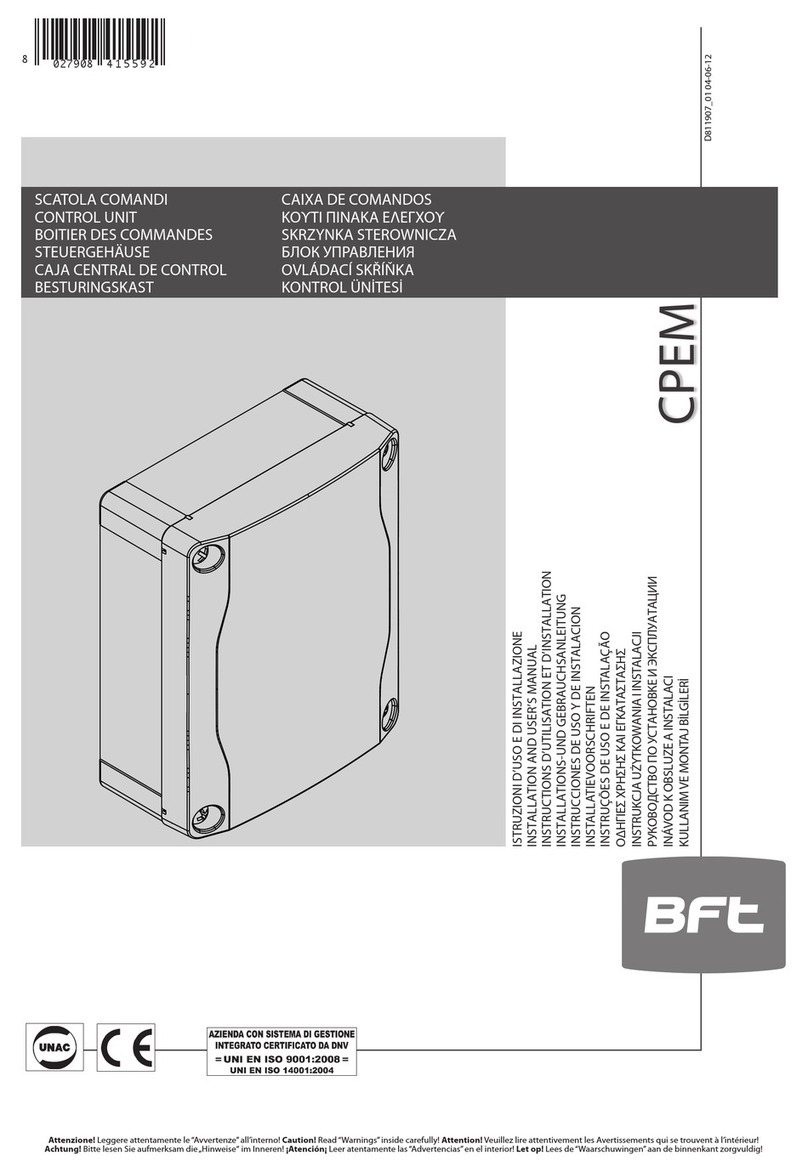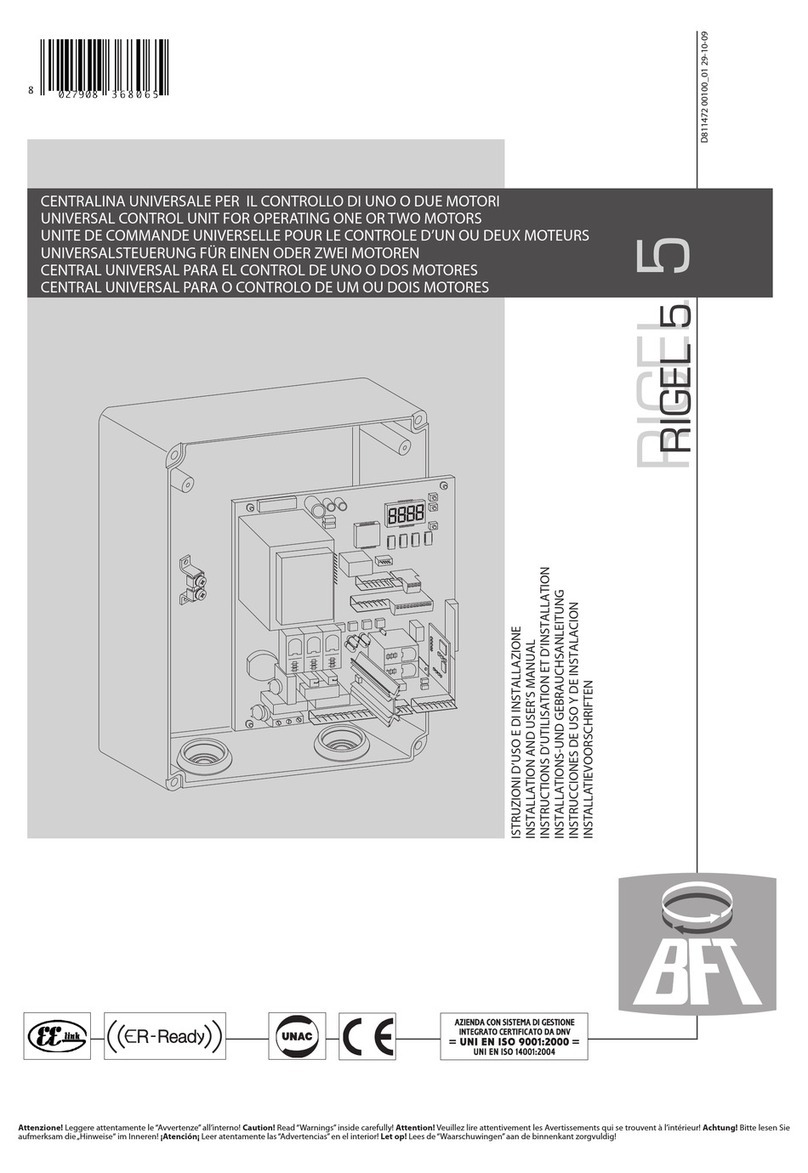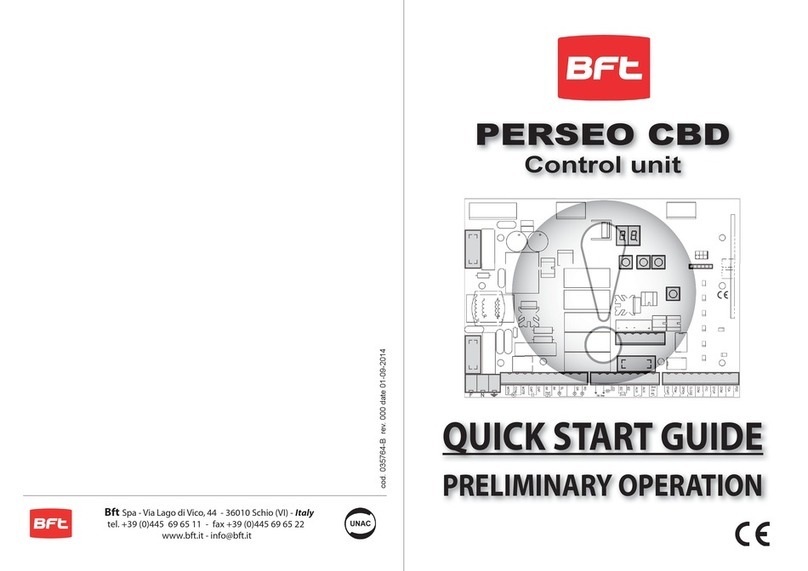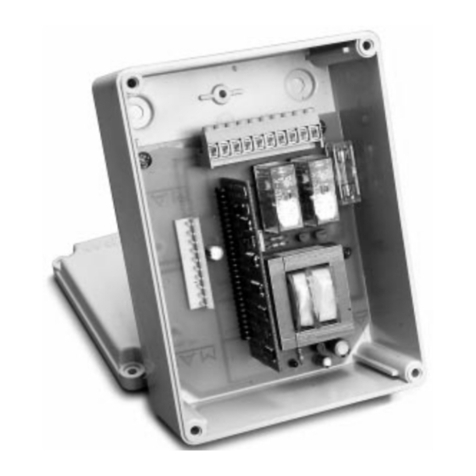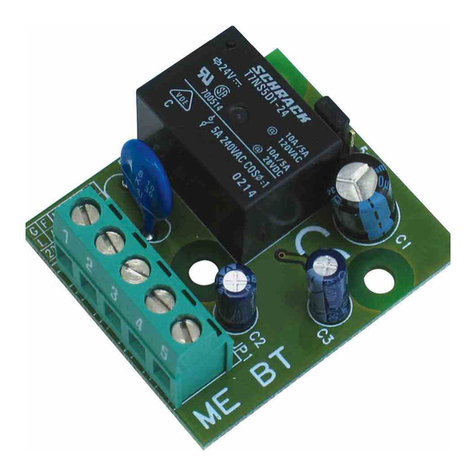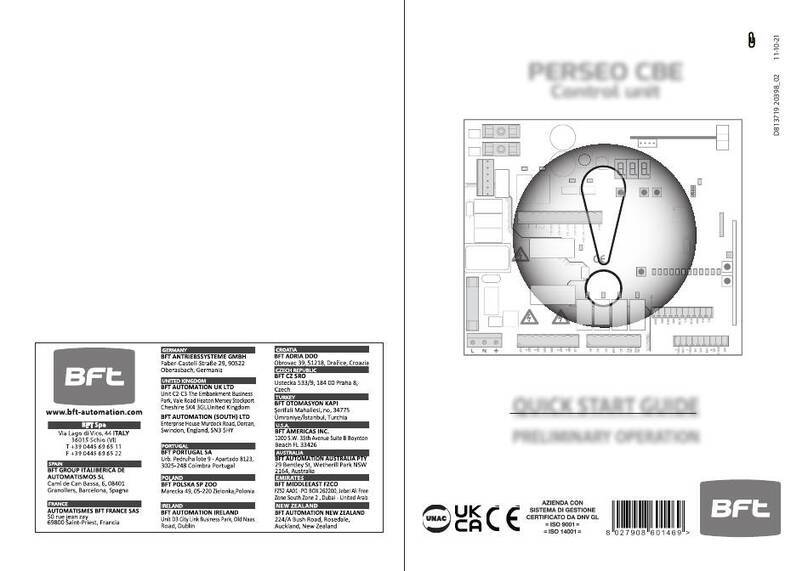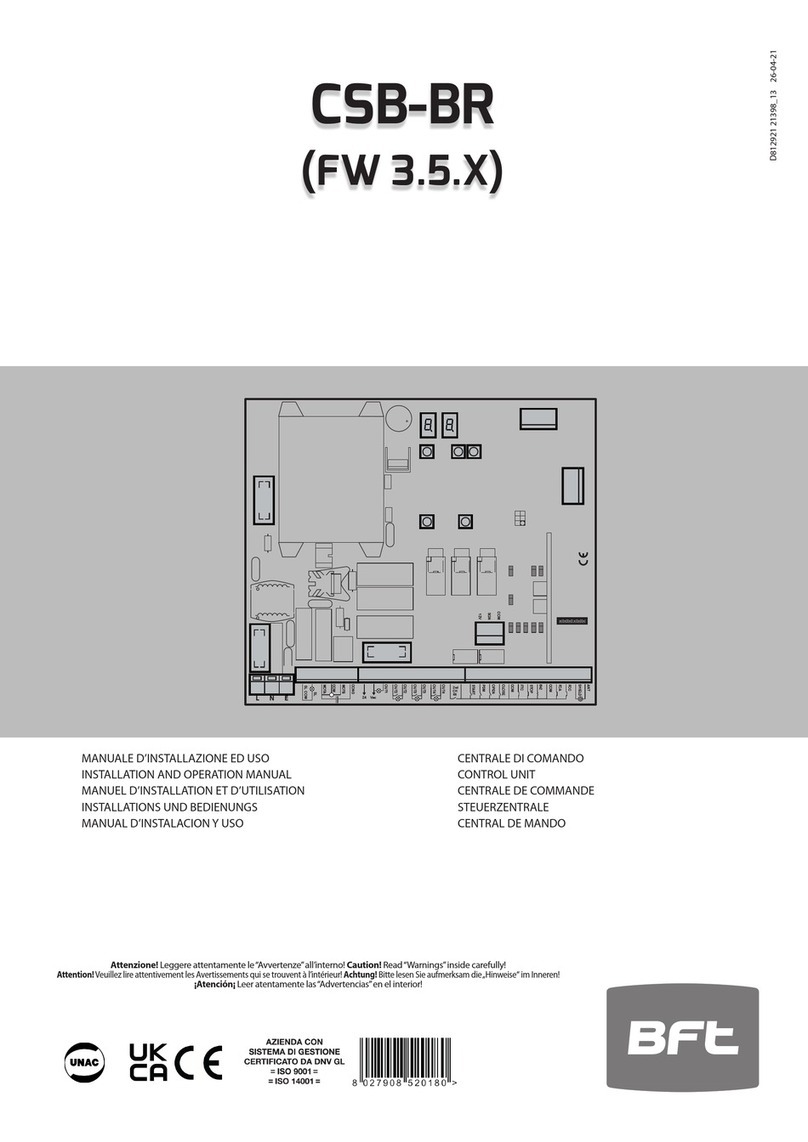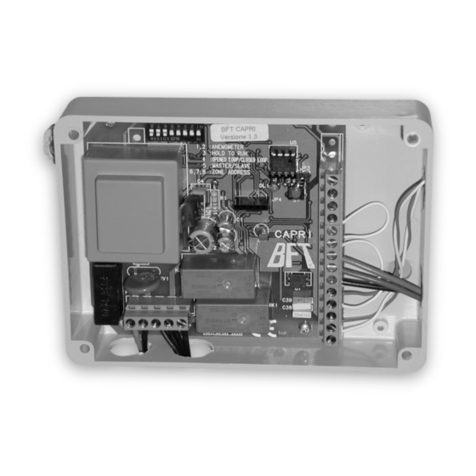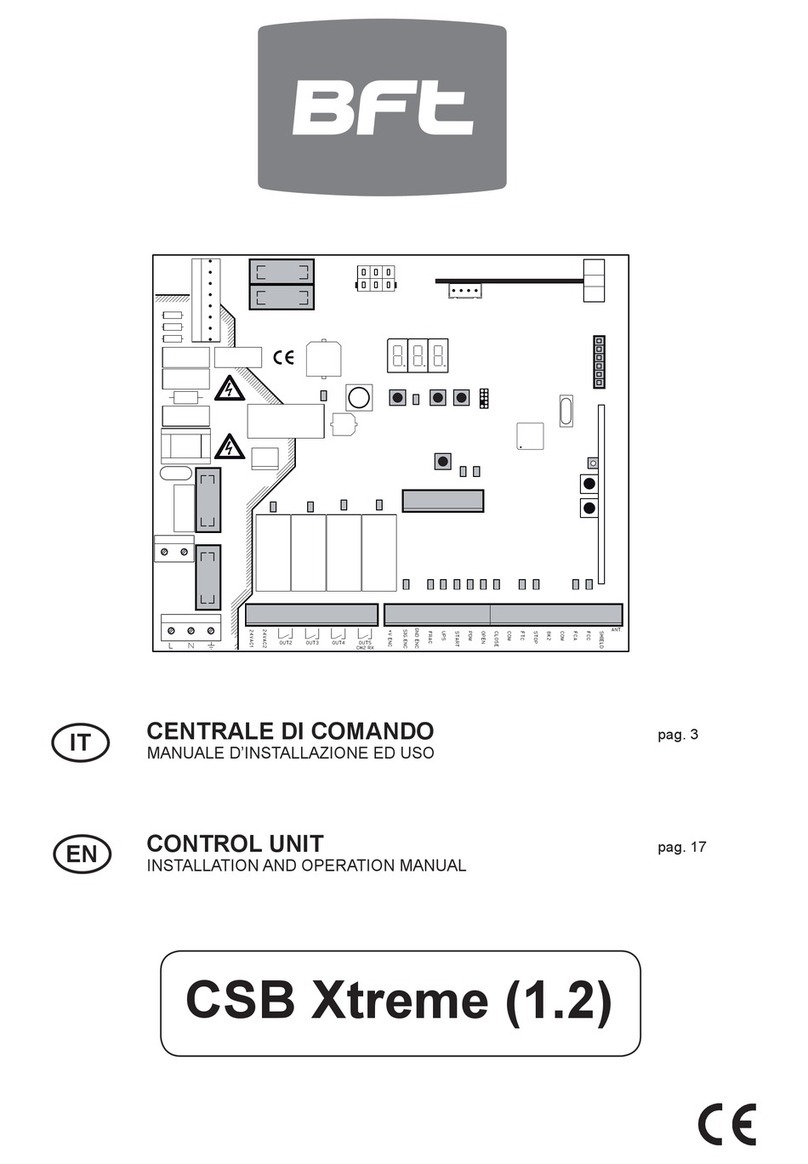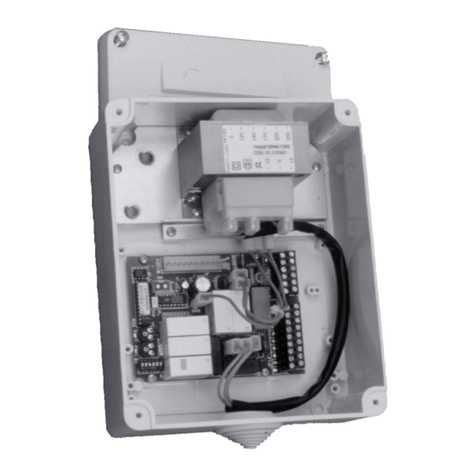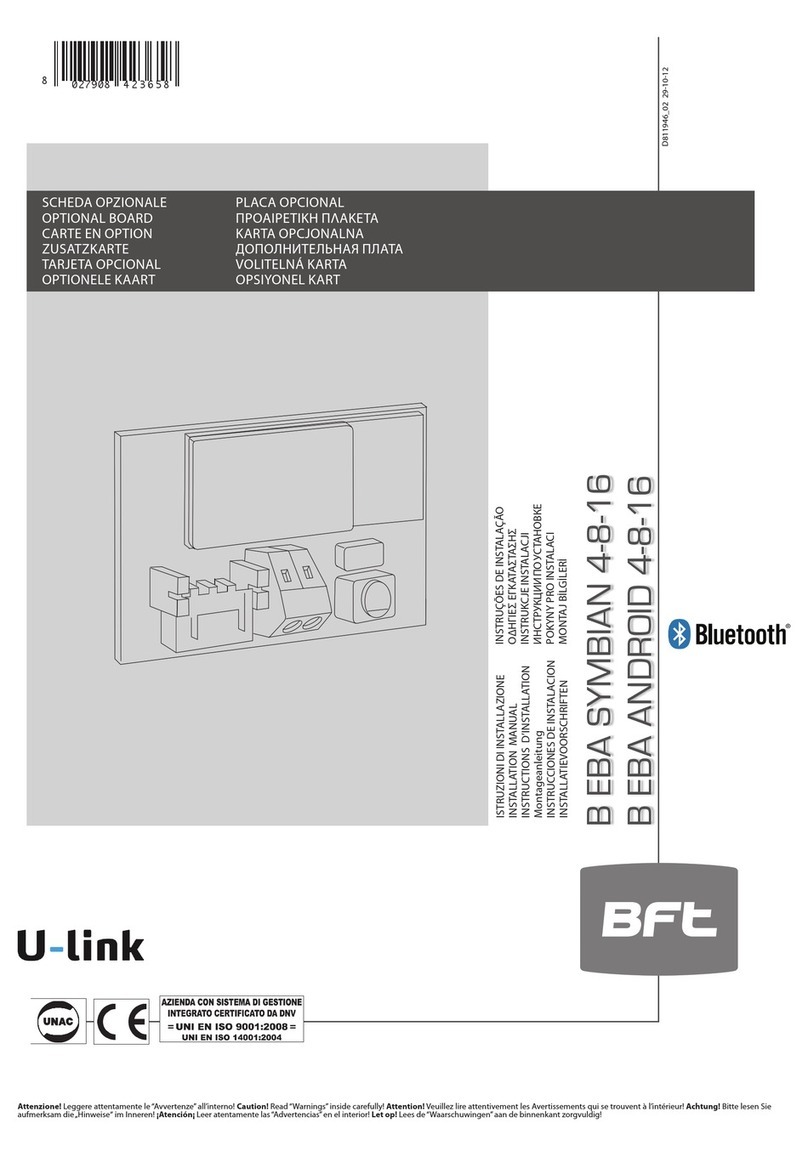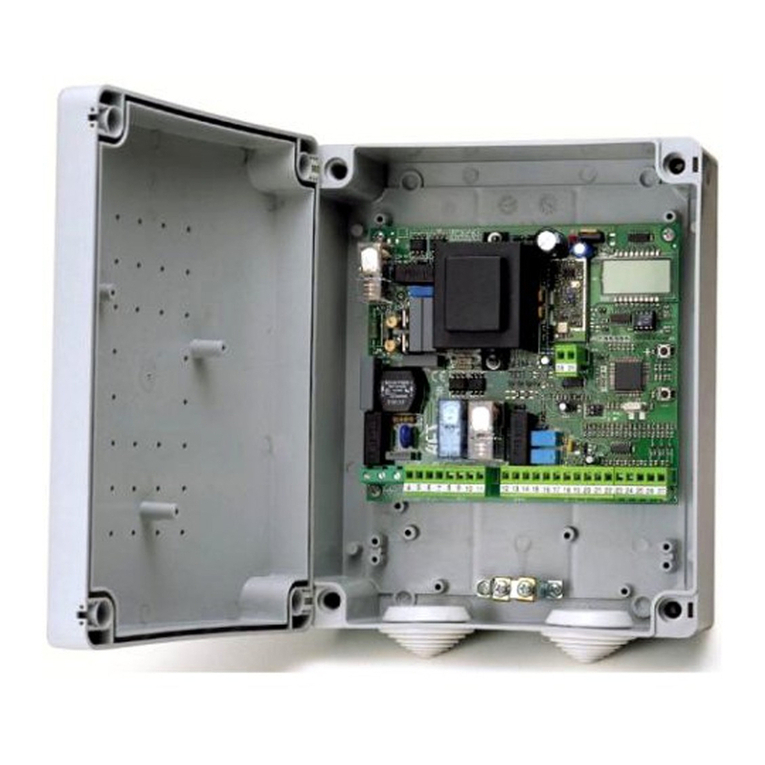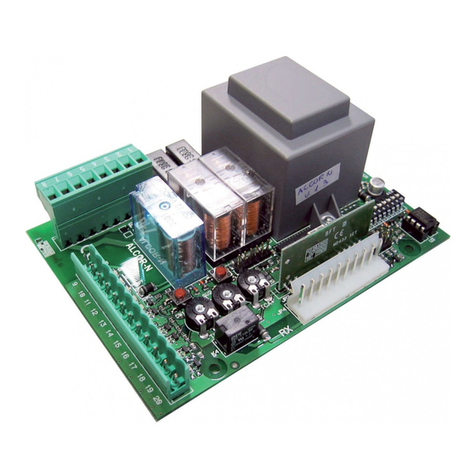Display + tasti programmazione
Display + programming keys
Display + Programmierungstasten
Pantalla + botones programación
Display + programmeringstoetsen
N
L
1234567891011121314151617181920212223242526
31 32 33 34
JP2
JP3
24V
~
230V
~
F
G
M
NO
NO
FAULT
COM
PED
COM
NC
SWC
NC
SWO
24V
~
0V
ANT
Grigio-Grey-Gris-Grau-Gris-Grijs
Grigio-Grey-Gris-Grau-Gris-Grijs
A
B
C
D
E
SCA/2°CH
COM
NO
NC
NO
NC
NC
START
CLOSE
STOP
PHOT
BAR
OPEN
Connettore programmatore palmare,
Palmtop programmer connector,
Connecteur programmateur de poche,
Steckverbinder Palmtop-Programmierer,
Conector del programador de bolsillo,
Connectorprogrammeerbare palmtop
.
Connettore programmatore palmare,
Palmtop programmer connector,
Connecteur programmateur de poche,
Steckverbinder Palmtop-Programmierer,
Conector del programador de bolsillo,
Connectorprogrammeerbare palmtop.
T 0,62 A
T 1 A
Connettore scheda opzionale
Optional board connector
Connecteur carte facultative
Steckverbinder Zusatzkarte
Conector de la tarjeta opcional
Connector optionele kaart
Connettore ricevitore radio
Radio receiver connector
Connecteur Récepteur Radio
Stecker Funkempfänger
Conector del receptor de radio
Connector Radio-ontvanger
A
C
B
D
MEMORIZZAZIONE RADIOCOMANDO
MEMORIZING REMOTE CONTROLS
MÉMORISATION RADIOCOMMANDE
ABSPEICHERUNG DER FERNBEDIENUNG
MEMORIZACION DEL RADIOMANDO
GEHEUGENOPSLAG AFSTANDSBEDIENING
0"'-
x 2
x 2
OK
.P+
OK
OK
$GLC
#LB$GL
R?QRML?QAMQRMFGBBCL
@SRRML
RMSAFC
A?AFCCTCPQRR?QRC
PGJ?QAG?PCJC?QC
PCJ?AFC
JMQJ?QQCLQSCJRC
R?QRMBCQGBCP?RM
BCQGBCP@SRRMLRMSAFC
BCQGPCC
ECTSC
R?QRCRCAJ?BCQC?B?
EEQR?PRBHMSRCP
QR?PRXSDSCEQR?PR
?L?BQR?PR
+ x 3
+
OK
VSAFE ~(+)
VSAFE ~(-)
24V ~(+)
24V ~(-)
25W max.
315 mA/T 230V
630 mA/T 110V
6,3 A/F 230V
10 A/F 110V
Display + tasti programmazione
Display + programming keys
Display + Programmierungstasten
Pantalla + botones programación
Display + programmeringstoetsen
0,5A max
(2A 2 sec.)
12
220
320
125
Collegamento di 1 coppia di fotocellule non verificate, Connection of 1 pair of non-tested
photocells, Connexion 1 paire photocellules non vériées, Anschluss von einem Paar nicht
überprüften Fotozellen, Conexión de 1 par fotocélulas no comprobadas, Aansluiting van 1 paar
fotocellen anders dan “trusted device”
LOGICA test fotocellule OFF
Photocell test LOGIC OFF
LOGIQUE essai photocellules Désactivée
LOGIK Test Fotozellen OFF
LÓGICA prueba fotocélulas OFF
LOGICA test fotocellen OFF
SSR5 (Fig. F)
1
2
3
4
5
6
7
1
2
1
2
3
4
5
TX1 RX1
1-PHOT
20 21
JP3
24 V~
24 V~
33 34 35 36 37
JP4
COM
PHOT
COM
BAR
VSafe +
VSafe -
230V
150W
max.
230V
150W
max.
10 11 12 13 10 11 12 13
Dip *?NCEE = ON
Dip @JGLI = ON
Dip DCSAJGEL= ON
Dip @JGLI = ON
Dip JSXGLR= ON
Dip *?NCEE = OFF
Dip @JGLI = OFF
Dip DCSAJGEL= OFF
Dip @JGLI = OFF
Dip JSXGLR= OFF












